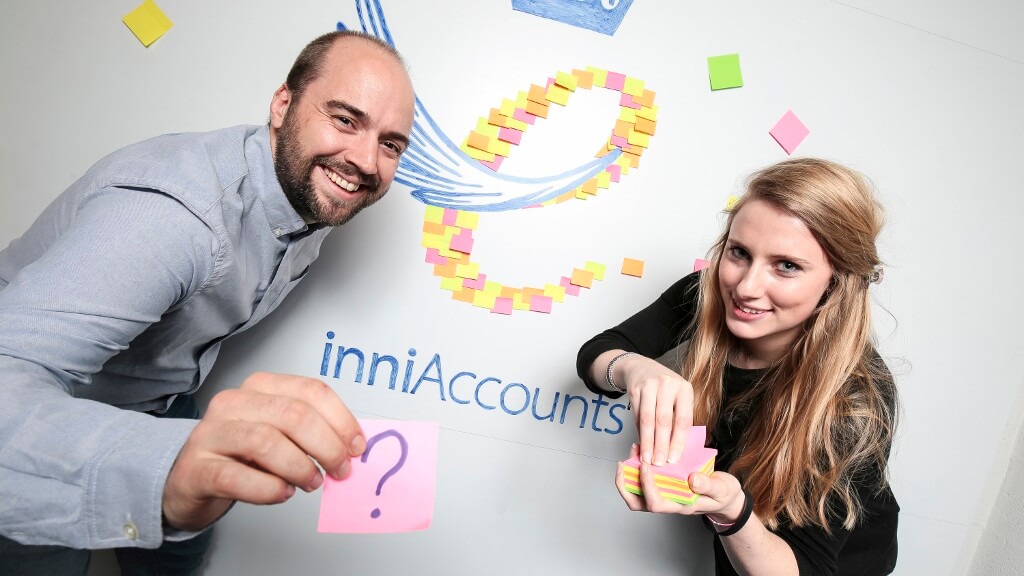Innovation isn’t just about technology, as James Poyser of inniAccounts discovered by accident. Here’s how he took a simple idea and developed a new approach to pricing.
Adventures In Pricing: Why Innovation Isn't Just About Tech
Innovation isn’t just about technology, as James Poyser of inniAccounts discovered by accident. Here’s how he took a simple idea and developed a new approach to pricing.

Any tech entrepreneur knows you’re a fool to stand still. And if you’re anything like me, you’ll already be thinking about how you can use the latest technology to improve your product before you’ve exploited the current technology that’s available.
Impatience is not a bad trait to have but it can mean you develop your product for technology’s sake rather than because there is a demand for it. What’s more, if you change the product or service beyond recognition, you could find you alienate your customers.
I’ve always believed that innovation in our business will rest on technology. You can’t disrupt and challenge the status quo market without obsessing over making the complex simple. It’s always formed the foundation of our business - develop software that is easy to use and overcomes the things that people hate about doing their accounts.
We’ve completely succeeded in our mission and we still invest in technology to develop the product. However, it wasn’t until I had to step in and cover a customer service role that it struck me that our obsession with technology innovation had clouded our ability to innovate in other areas of our business that weren’t dependent on technology.
For instance, we'd never considered that there's scope for innovation in pricing models - which, in retrospect, now seems obvious.
It’s good to talk
It came about when I covered the phones for three months taking calls from prospects and customers.
The more I spoke to people the more I realised there was an unaddressed anxiety: people looking to start a new career as contractors and consultants have enough to worry about, like finding work, let alone committing to paying an accountant, month in, month out.
They were therefore reluctant to appoint us, despite telling us the product would save them time and tax, and was ideal for their needs.
It was frustrating but an epiphany at the same time – what if we could take that anxiety away?
Method over madness
Rather than go head long in development we applied the methodical approach we use to tech development – use market research to understand if this was an unmet need, and therefore an opportunity for us to grow our market share by addressing it.
It’s worth noting that researching this sort of thing isn’t the done thing in the world of accounting. For decades, tens of thousands of accountancy firms have priced in a similar way, so you think it must be right. Listening to what was ‘unsaid’ by customers gave us the insight to innovate.
There were two phases to research and I’d recommend this approach to anyone doing research for the first time, or researching a completely new business opportunity.
Sweat your assets
Firstly we started with the information we already had. We used our database of non-purchasing leads and undertook quantitative research. This revealed that the desire for pricing innovation was much greater than any product or service innovations. That’s the moment when you think why didn’t we think about this before? It felt like hitting a goldmine.
The survey participants were asked would they like the option to take a break from their fees if they were out of work. A very simple concept that had come directly from the phone calls I took.
People responded well to us continuing our service yet waiving our fees if they were out of work, therefore sharing risk with them. This was the most desired innovation, out-performing the next best idea five-fold.
It was empathetic – we were in it together. Strangely though it wasn’t a departure for us. We understand it feels risky to be a contractor, the founders had all been there and we talk about it every day, but for some reason we hadn’t moved our thinking on to how we could help, not just with an online tool but with a flexible pricing model.
Get physical
But knowing this wasn’t enough. We still needed to test the idea outright. And the best way to do that is with an actual prototype. So we created a mock website, for deep qualitative research.
We built a functional site that presented the flexible pricing. We’d always built prototypes but they had been designed to test features like tax management.
We then put it through its paces by recording and interviewing people about their impressions of the pricing innovation.
It's always nerve-wracking commissioning research, and you can't help but feel disappointed when you don't get a positive response. But because we had already done our homework, the response was overwhelmingly positive. We've never had such a great response on the first iteration.
So much so, that today’s visitors to the website use the same version we used to test our ideas for pricing innovation, 11 months before we'd even committed to delivering it.
Don’t take it as read
We built on this insight to evolve our price plan concepts and refine the models.
That’s a really important step in the process. If you’re hypothesis is wrong then you can change it. If it’s right then it’s a brilliant outcome, but if you uncover more nuggets then you need to consider whether they are more important, as important or less important than your original idea, and if necessary, retest any improvements or changes you think will enhance your innovation.
Stay true to the core insight
One final thought, the notion of ‘don’t innovate for innovation’s sake’ is still worth keeping in mind at this point. Make sure that any refinements you make are ones that the majority will want, or are additional extras that the minority can adopt but in such a way that you won’t undermine the idea you’ve researched so hard.
But most importantly you’ll risk your core business model, revenue, and the very essence of the brand you have built. Avoid jeopardising that at all costs and you’ll reap the rewards.
Thanks for signing up to Minutehack alerts.
Brilliant editorials heading your way soon.
Okay, Thanks!




